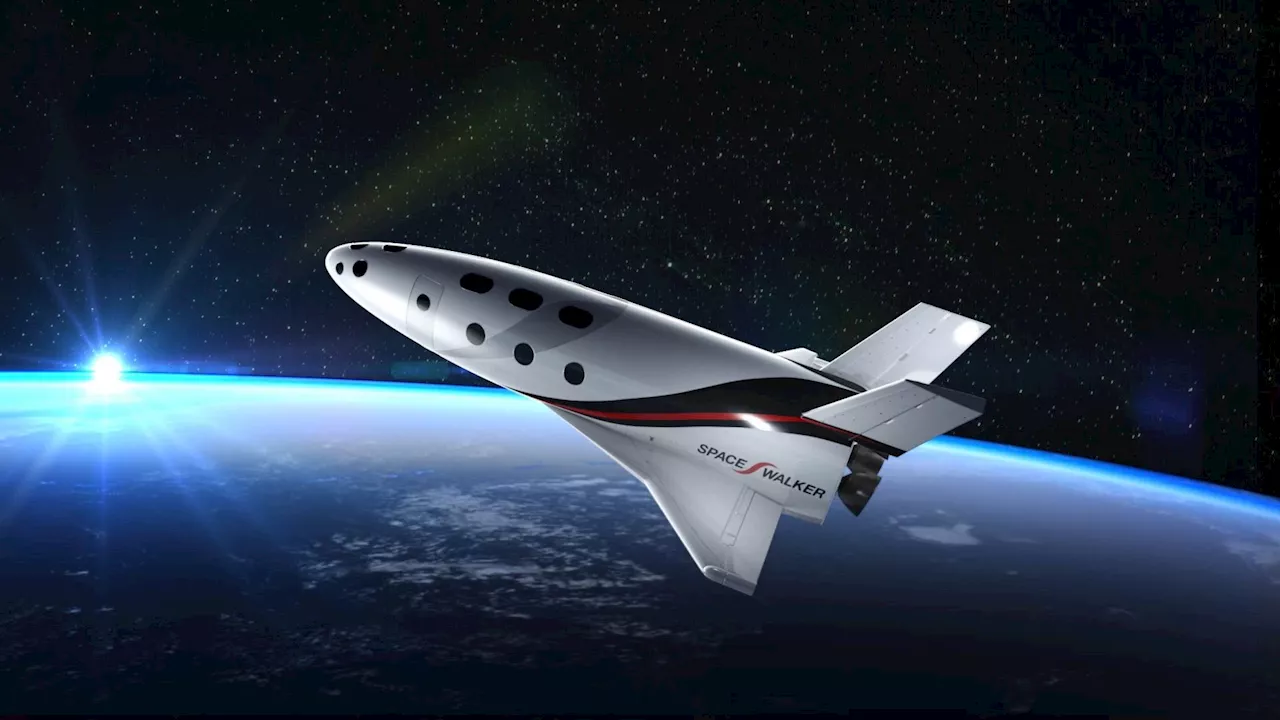Japanese startup Space Walker is developing the Eco Rocket, a reusable spaceplane designed for suborbital space tourism and scientific research. With a focus on sustainability and accessibility, the company aims to make space travel more commonplace.
A Japan ese-led venture called Space Walker aims to build Japan ’s first private spaceplane, the Eco Rocket. Space Walker describes itself as a “Tokyo University of Science certified startup conducting research and development of spaceplanes.” It aims to perform its first test flight by 2026. The Eco Rocket isn’t the first time Japan ese engineers have worked on a spaceplane.
In the 1980s, NASDA and NAL, both now part of the Japanese space agency JAXA, were developing the experimental Hope-X spaceplane. That spaceplane was designed to send astronauts to and from the International Space Station (ISS). It would be one of Japan’s main contributions to the orbital station. Though the Hope-X project successfully flew test flights of a subscale testbed, the project was ultimately discontinued in 2003. So, if all goes to plan, the Eco Rocket could become Japan’s first operational spaceplane. On its website, Space Walker explains that “we envision sustainable commercial space transportation for all, as familiar and accessible as commercial air travel today.” The company says it has patented the technology behind a world-first lightweight-composite cryogenic propellant tank. It also emphasizes the value of reusability, which has been shown in practice by SpaceX’s incredibly successful Falcon 9 program. Space Walker will go the extra mile for sustainability, though, as the Eco Rocket will use a carbon-neutral liquefied biomethane propellant. Space Walker is the first private rocket company to receive a private investment from JAXA, the company explained in a recent. At CES, the company set out an impressive innovation roadmap for the next two decades. The Japanese firm aims to perform a technology demonstration, dubbed WIRES, as soon as next year. In 2028, it aims to launch a suborbital science mission called FuJin. By 2030, its goal is to perform suborbital space travel missions. Finally, by the 2040s Space Walker is looking to run operational point-to-point orbital space travel. Space enthusiasts might remember SpaceX’s own point-to-point travel concept. The private space firm shared a concept video (below) in 2017. The render footage showed Starship being used as a public transport system to ferry passengers into orbit before flying to distant destinations at record speeds. The concept would allow travel times anywhere on Earth within an hour. We are likely a long way from seeing such a concept become a reality. Still, a spaceplane that could perform airliner-like runway landings would be a more comfortable option for this form of orbital passenger flight. Space Walker’s Eco Rocket craft is being developed with suborbital space tourism and scientific research in mind. By focusing on human crews and passengers (alongside cargo or experiments), Space Walker is joining a growing market for private and educational spaceflight. Beyond passenger flights, the spaceplane could be used for microgravity experiments, satellite launches, as well as point-to-point travel.
SPACEPLANE JAPAN SUSTAINABILITY SPACETOURISM RESEARCH
United States Latest News, United States Headlines
Similar News:You can also read news stories similar to this one that we have collected from other news sources.
 Edge of Space: A Thrilling Short Film Inspired by the Space RaceA new short film, 'Edge of Space', is making waves in the film festival circuit. Set during the height of the Cold War space race, the film follows a brave USAF test pilot recruited by NASA for a suborbital mission.
Edge of Space: A Thrilling Short Film Inspired by the Space RaceA new short film, 'Edge of Space', is making waves in the film festival circuit. Set during the height of the Cold War space race, the film follows a brave USAF test pilot recruited by NASA for a suborbital mission.
Read more »
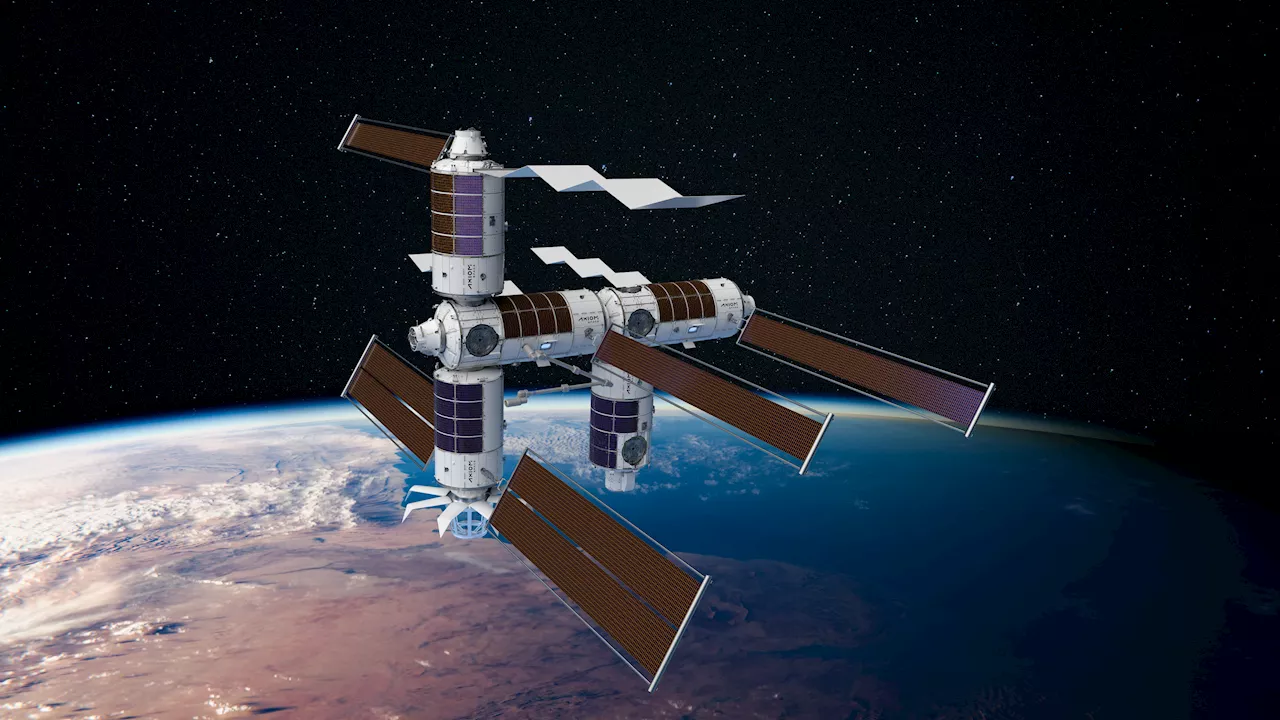 Axiom Space Adjusts Assembly Sequence for Earlier Free-Flying Space StationAxiom Space, in partnership with NASA, has modified its planned assembly sequence for its commercial space station, Axiom Station. This change aims to accelerate the station's operation as a free-flying entity and reduce dependence on the International Space Station (ISS) during assembly. The new sequence will see the Payload, Power, and Thermal Module launched first, allowing the station to detach from the ISS as early as 2028. Axiom will then continue assembly in free-flight, adding modules like Habitat 1 and the Research and Manufacturing Facility.
Axiom Space Adjusts Assembly Sequence for Earlier Free-Flying Space StationAxiom Space, in partnership with NASA, has modified its planned assembly sequence for its commercial space station, Axiom Station. This change aims to accelerate the station's operation as a free-flying entity and reduce dependence on the International Space Station (ISS) during assembly. The new sequence will see the Payload, Power, and Thermal Module launched first, allowing the station to detach from the ISS as early as 2028. Axiom will then continue assembly in free-flight, adding modules like Habitat 1 and the Research and Manufacturing Facility.
Read more »
 Axiom Space Adjusts Plans for Commercial Space StationAxiom Space has modified its assembly sequence for its planned commercial space station, Axiom Station, to accelerate its operation as a free-flying space station and reduce reliance on the International Space Station during assembly. The new plan involves launching the Payload, Power, and Thermal Module first, allowing it to detach as early as 2028 and become a free-flying destination. Axiom Space will continue assembly in free-flight, adding additional modules like Habitat 1 and the Research and Manufacturing Facility.
Axiom Space Adjusts Plans for Commercial Space StationAxiom Space has modified its assembly sequence for its planned commercial space station, Axiom Station, to accelerate its operation as a free-flying space station and reduce reliance on the International Space Station during assembly. The new plan involves launching the Payload, Power, and Thermal Module first, allowing it to detach as early as 2028 and become a free-flying destination. Axiom Space will continue assembly in free-flight, adding additional modules like Habitat 1 and the Research and Manufacturing Facility.
Read more »
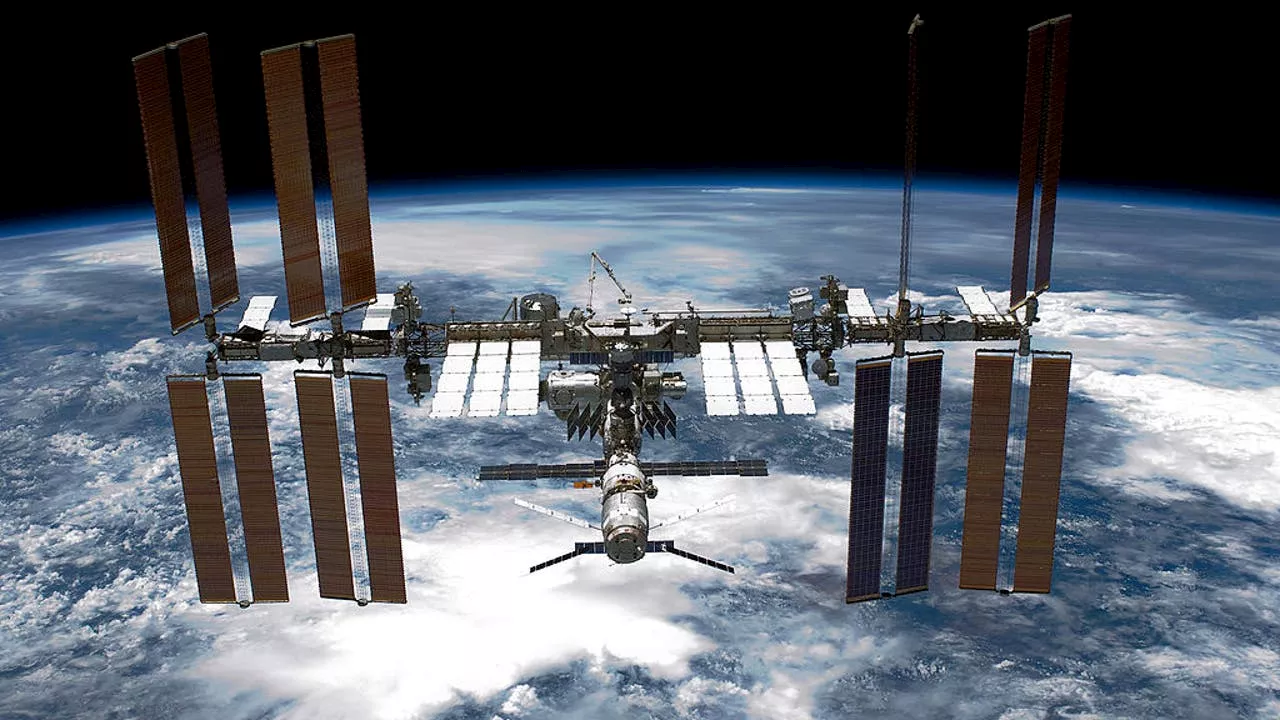 Space Debris Threatens Future of Space TravelThousands of defunct satellites and fragments orbit Earth at dangerous speeds, posing a significant risk to space travel. Experts warn that this space debris could lead to Kessler Syndrome, a chain reaction of collisions that makes parts of Earth's orbit unusable. The European Space Agency reports that only 10,200 out of 13,230 satellites launched remain in orbit, and defunct satellites, rocket boosters, and even lost tools contribute to the growing hazard. Spacefaring nations are taking action to address this threat, with the ESA's Zero Debris Charter aiming to nearly eliminate space junk by 2030.
Space Debris Threatens Future of Space TravelThousands of defunct satellites and fragments orbit Earth at dangerous speeds, posing a significant risk to space travel. Experts warn that this space debris could lead to Kessler Syndrome, a chain reaction of collisions that makes parts of Earth's orbit unusable. The European Space Agency reports that only 10,200 out of 13,230 satellites launched remain in orbit, and defunct satellites, rocket boosters, and even lost tools contribute to the growing hazard. Spacefaring nations are taking action to address this threat, with the ESA's Zero Debris Charter aiming to nearly eliminate space junk by 2030.
Read more »
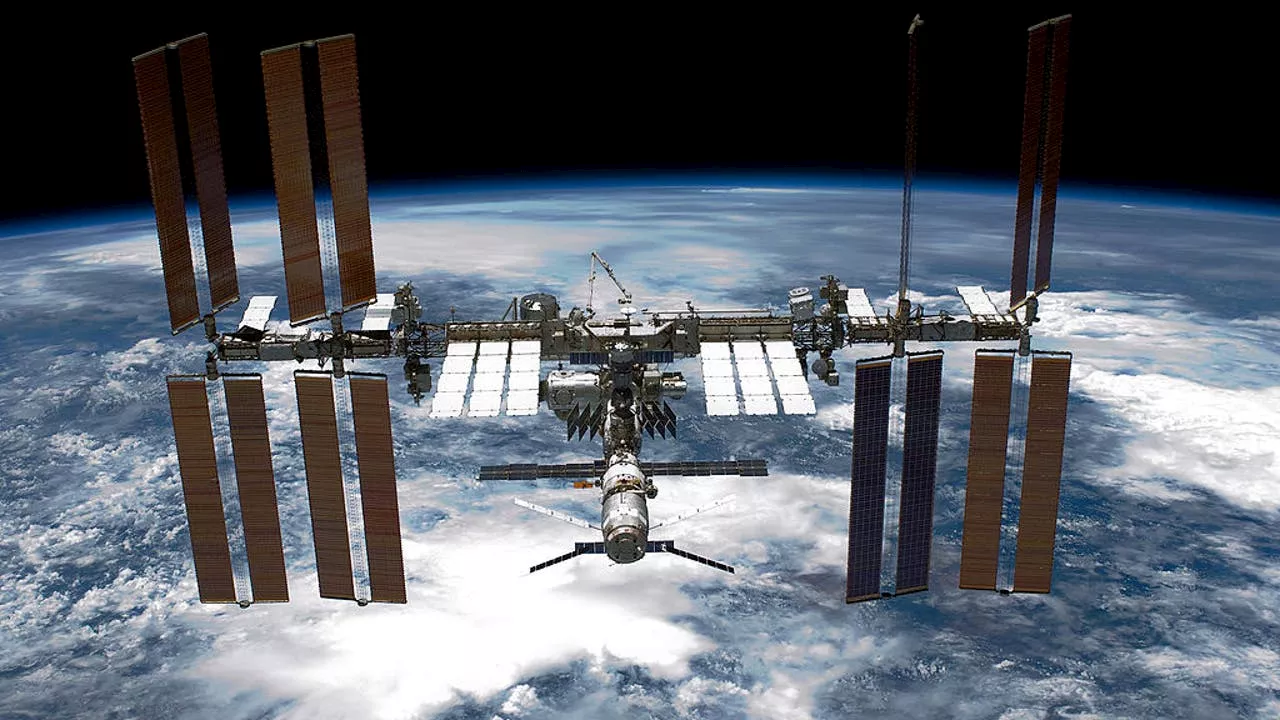 Space Debris Threatens the Future of Space TravelThousands of defunct satellites and fragments circling Earth at dangerous speeds pose a serious threat to future space exploration. Experts warn that the growing amount of space debris could make parts of Earth's orbit unusable.
Space Debris Threatens the Future of Space TravelThousands of defunct satellites and fragments circling Earth at dangerous speeds pose a serious threat to future space exploration. Experts warn that the growing amount of space debris could make parts of Earth's orbit unusable.
Read more »
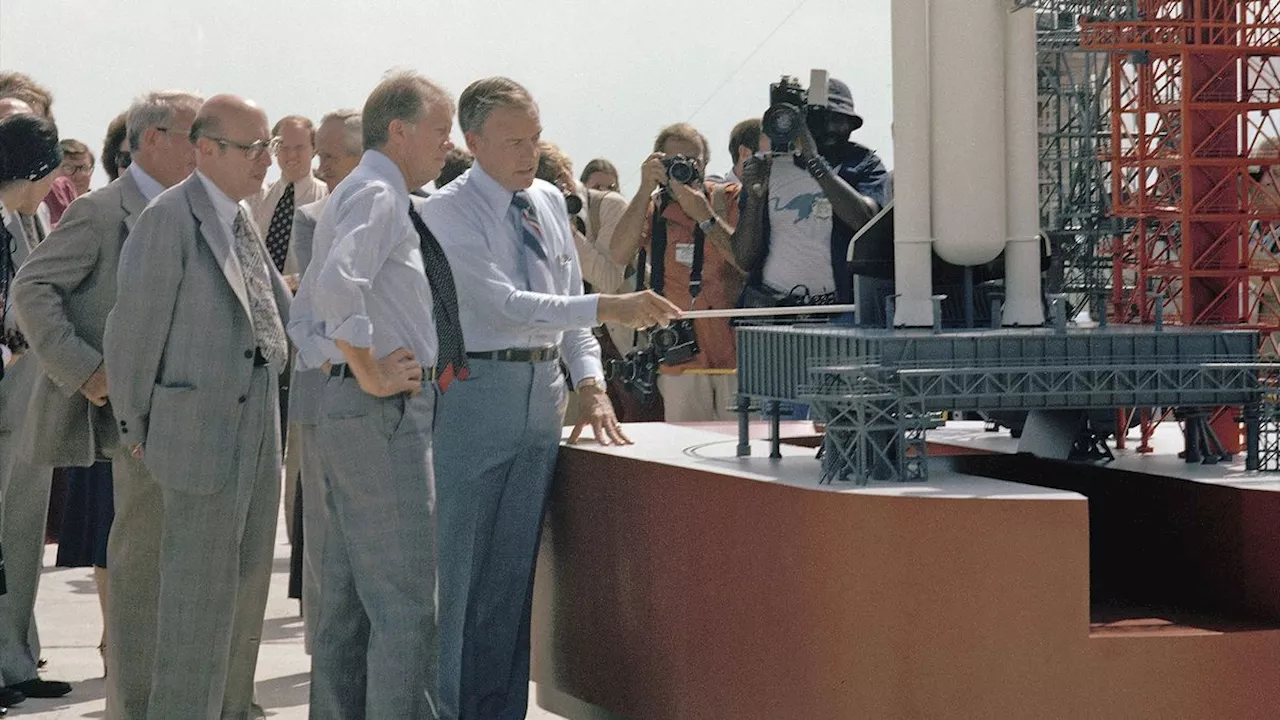 Jimmy Carter's Space Legacy: Voyager Message and Space Shuttle FundingThis article explores the lasting impact of former President Jimmy Carter on space exploration. It highlights his contributions to the Voyager Golden Record, a message sent into interstellar space, and his crucial support for funding the development of the space shuttle.
Jimmy Carter's Space Legacy: Voyager Message and Space Shuttle FundingThis article explores the lasting impact of former President Jimmy Carter on space exploration. It highlights his contributions to the Voyager Golden Record, a message sent into interstellar space, and his crucial support for funding the development of the space shuttle.
Read more »
